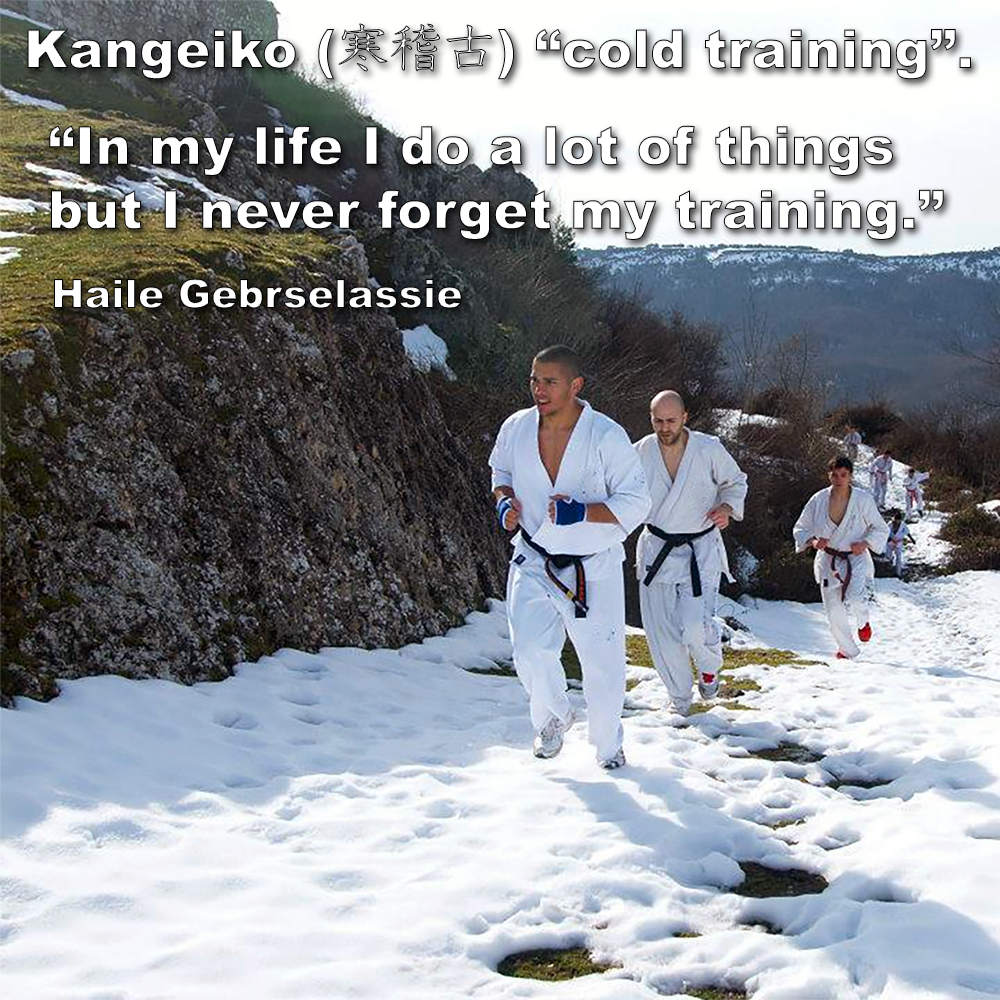
"In my life I do a lot of things but I never forget my training." - Haile Gebrselassie
Posted by ADAM CARTER on JAN 20, 2024

"In my life I do a lot of things but I never forget my training." - Haile Gebrselassie
It‘s that time of year again. Substantial snowfall, temperatures plummeting below freezing, and a polar wind that leaves you breathless.
The icy wind whips across your face, your fingers and toes numb from the cold, and your breath hangs heavy in the air. But you stand there, muscles burning, sweat freezing in your keiko-gi, fists pounding the air.
This is Kangeiko (寒稽古), cold training or winter training, the brutal winter training at the heart of traditional karate. Not just a grueling physical challenge, it’s a crucible that forges the indomitable spirit of the karate-ka. It’s a baptism by cold, a confrontation with nature’s harshest elements, and a testament to the unwavering human will.
Forget air-conditioned dojos, Kangeiko throws you outdoors, barefaced against nature’s fury. It’s like a boot camp for your spirit, pushing you past limits you didn’t know you had.
Early karate masters practiced Kangeiko in rudimentary dojo, often little more than open-air shelters. They trained barefoot in the snow, endured icy seawater conditioning, and performed grueling kata repetitions under the unforgiving gaze of the winter sun.
This harsh training wasn’t just about building physical strength; it was about forging an unshakeable spirit, a mind as unyielding as the winter ice.
Training sessions often begin before sunrise, with practitioners enduring hours of intense exercise in the frigid air. Basic techniques, drills and kata take on a new dimension when performed amidst the biting wind and stinging snow.
The cold saps your energy, and numbs your limbs, it tests the limits of your physical endurance. Yet, you persevere, fueled by an inner fire and unwavering spirit. Each punch, kick, and kata repetition becomes a battle against the elements and a testament to the unyielding human spirit.
While the physical challenges of Kangeiko are undeniable, it’s the mental transformation that truly sets it apart. The harsh winter environment becomes a metaphor for life’s inevitable difficulties.
The cold represents adversity, the wind whispers of doubt, and the snow symbolizes the burdens we all carry.
But within this crucible, something extraordinary happens. You learn to embrace discomfort, to find strength in vulnerability, and to push beyond perceived limitations.
You can discover an inner resolve, a mental fortitude that helps you to face any challenge with unwavering focus and spirit.
And Kangeiko is for all students, not just the experienced, its lessons are universal. It teaches you that the greatest victories are often forged in adversity. It reminds us that the human spirit is capable of incredible resilience.
In today’s fast-paced world, where comfort and convenience are often prioritized, where everyone wants something “NOW”, Kangeiko serves as a powerful reminder of the importance of hardship and self-discipline.
It is a call to step outside your comfort zone, to embrace challenges, and to build and forge your mental strength.
So, the next time you face a challenge, remember the spirit practiced in Kangeiko. Commit to memory the bite of the winter wind, and know, with unwavering certainty, that you have the strength to overcome anything.
